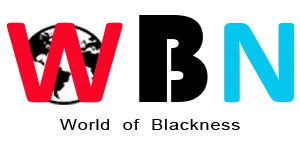World AIDS Day, designated on 1 December every time since 1988, is a transnational day devoted to raising mindfulness of the AIDS epidemic caused by the spread of HIV infection and mourning those who’ve failed of the complaint. Acquired immunodeficiency pattern( AIDS) is a life-threatening condition caused by the mortal immunodeficiency contagion( HIV). The HIV contagion attacks the vulnerable system of the case and reduces its resistance to other conditions. Government and health officers, non-governmental associations, and individuals around the world observe the day, frequently with education on AIDS forestallment and control. This discussion is focused on the History of World AIDS Day.
World AIDS Day is one of the eleven sanctioned global public health juggernauts marked by the World Health Organization( WHO), is particularly linked with:
- World Disease Day
- Patient Safety Day
- Blood Donor Day
- Health Day
- Week of Immunization World
- Day of World Tuberculosis
- Day of No Tobacco
- Malaria Day
- Week of Antimicrobial Awareness and so on.
As of 2020, AIDS has killed between 27.2 million and 47.8 million people worldwide, and an estimated 37.7 million people are living with HIV, making it one of the most important global public health issues in recorded history. Thanks to recent advanced access to antiretroviral treatment in numerous regions of the world, the death rate from the AIDS epidemic has dropped by 64 since its peak in 2004. According to the report, the recorded rate of death was about 1.9 Million in the Year 2004 which dropped and recorded 680000 in the Year 2020.
History of AIDS Day
According to the research, James W. Bunn and Thomas Netter were considered in the in August 1987, two public information officers for the Global Program on AIDS at the World Health Organization in Geneva, Switzerland. Meanwhile, Bunn and Netter took their idea to Dr. Jonathan Mann, who was a Director of the Global Program on AIDS( which is also known as UNAIDS). On behalf of this Mann was the one who accepted and liked their ideas and conception. After this, he approved and agreed that the observation of World AIDS Day must be on 1 December 1988 and followed up accordingly. Bunn, a former TV broadcast intelligencer from San Francisco, had recommended the date of 1 December believing it would maximize content of World AIDS Day by Western news media, sufficiently long following the US choices but before the Christmas leaves.
In its first two times, the theme of World AIDS Day concentrated on children and young people. While the choice of this theme was blamed at the time by some for ignoring the fact that people of all periods may become infected with HIV, the theme helped palliate some of the smirch girding the complaint and boost recognition of the problem as a family complaint.
The Joint United Nations Program on HIV/ AIDS( UNAIDS) became functional in 1996, and it took over the planning and creation of World AIDS Day. Rather than concentrate on a single day, UNAIDS created the World AIDS Crusade in 1997 to concentrate on time-round dispatches, forestallment, and education. In 2004, the World AIDS Crusade became an independent association.
Each time since 1988, Popes have released a greeting communication for cases and croakers
on World AIDS Day. In 2016, a collection of HIV, rabies, COVID-19, and other respiratory contagions NGOs( including Pangaea Global AIDS and the AIDS and Rights Alliance for Southern Africa) started a crusade to brand World AIDS Day to World HIV Day. On their behalf, they raised the question and said that this change will significantly raise or emphasize the social justice issues and another thing is treatments with advancement which means Pre-Exposure Prophylaxes.
In the US, the White House began marking World AIDS Day with the iconic display of a 28-bottom (8.5 m) AIDS Ribbon on the structure’s North Portico in 2007. White House assistant Steven. Levine, also serving in President George. Bush’s administration, proposed the display to emblematize the United States’ commitment to combat the world AIDS epidemic through its corner PEPFAR program. The White House display, now a periodic tradition across four presidential administrations, grabbed the attention of people and the main thing is after Abraham Lincoln’s administration it was the first banner, symbol, or sign that was hung from the White House.
Since 1993, the President of the United States has made a sanctioned proclamation for World AIDS Day( see sections Presidential Proclamations for World AIDS Day for clones of those proclamations). On 30 November 2017, President Donald Trump along with original community council scholars placarded World AIDS Day for 1 December.
Themes
All the World AIDS Day juggernauts concentrate on a specific theme, chosen following consultations with UNAIDS, WHO, and a large number of grassroots, public, and transnational agencies involved in the forestallment and treatment of HIV/ AIDS. As of 2008, each time’s theme is chosen by the Global Steering Committee of the World AIDS Crusade ( WAC).
During the period from 2005 to 2010, the theme of World AIDS Day was considered Stop AIDS. Keep the Promise”, designed to encourage political leaders to keep their commitment to achieving universal access to HIV/ AIDS forestallment, treatment, care, and support by the time 2010.
As of 2012, the themulti-year theme for World AIDS Day is” Getting to Zero Zero new HIV infections. Zero deaths from AIDS-related illness. Zero demarcation.” The US Federal theme for the time in 2014 was” Focus, Partner, Achieve An AIDS-Free Generation”.
The themes aren’t limited to a single day but are used time-round in transnational sweats to punctuate HIV/ AIDS mindfulness within the environment of other major global events including the G8 Summit, as well as original juggernauts like the Student Stop AIDS crusade in the UK.


[…] for Inventory Management: Implementing artificial intelligence to optimize inventory and reduce waste in the production and distribution of […]